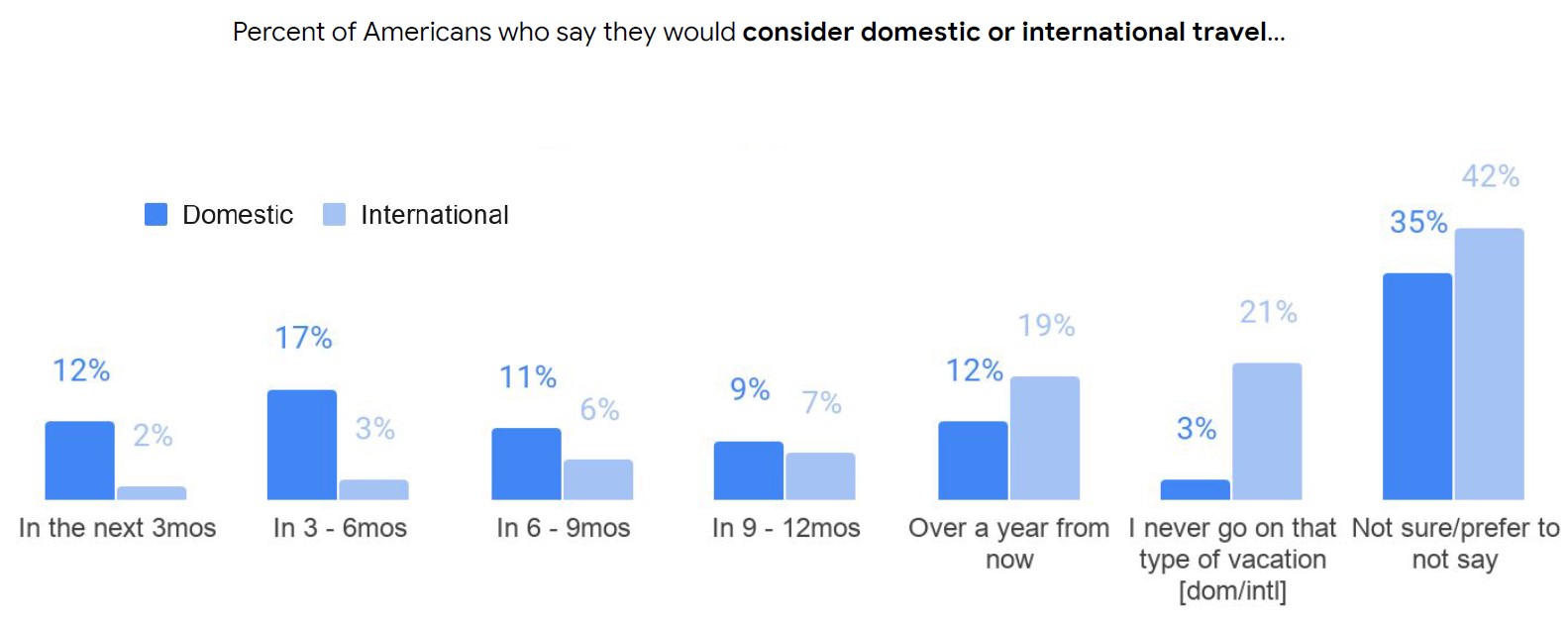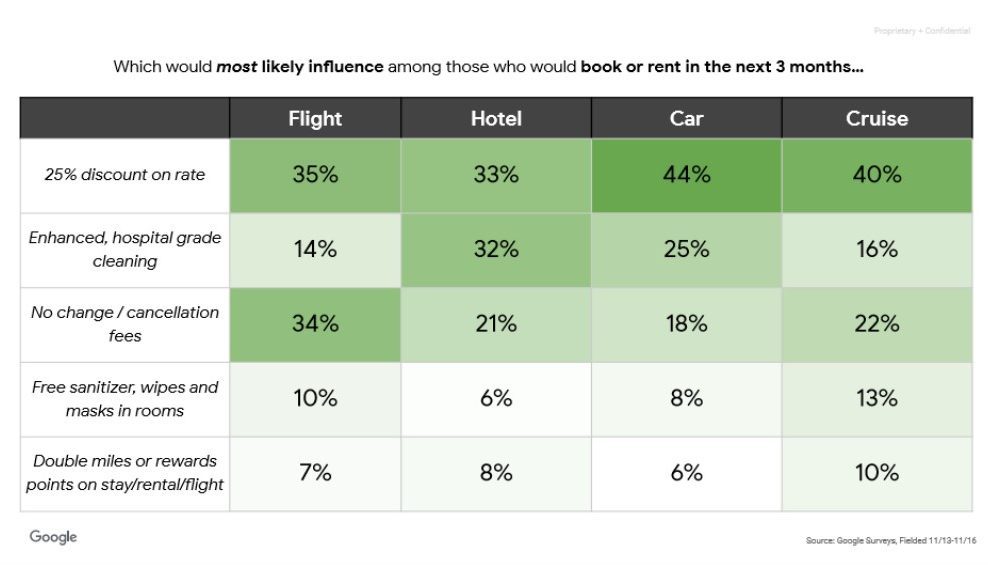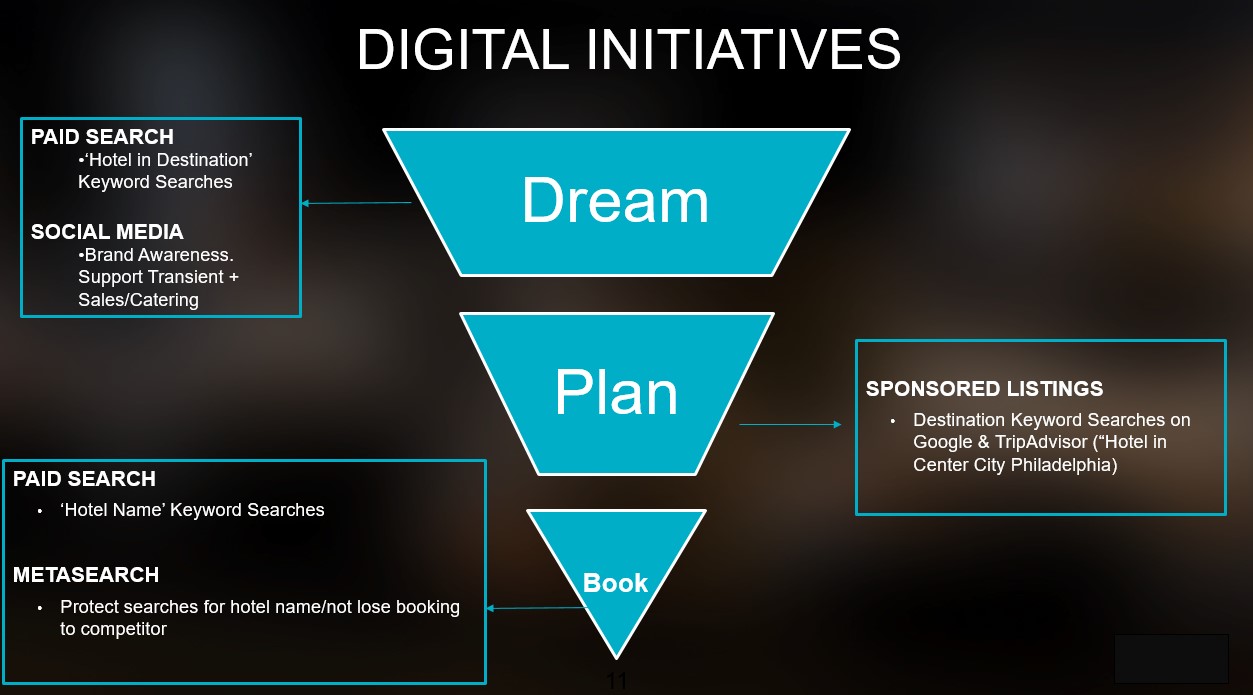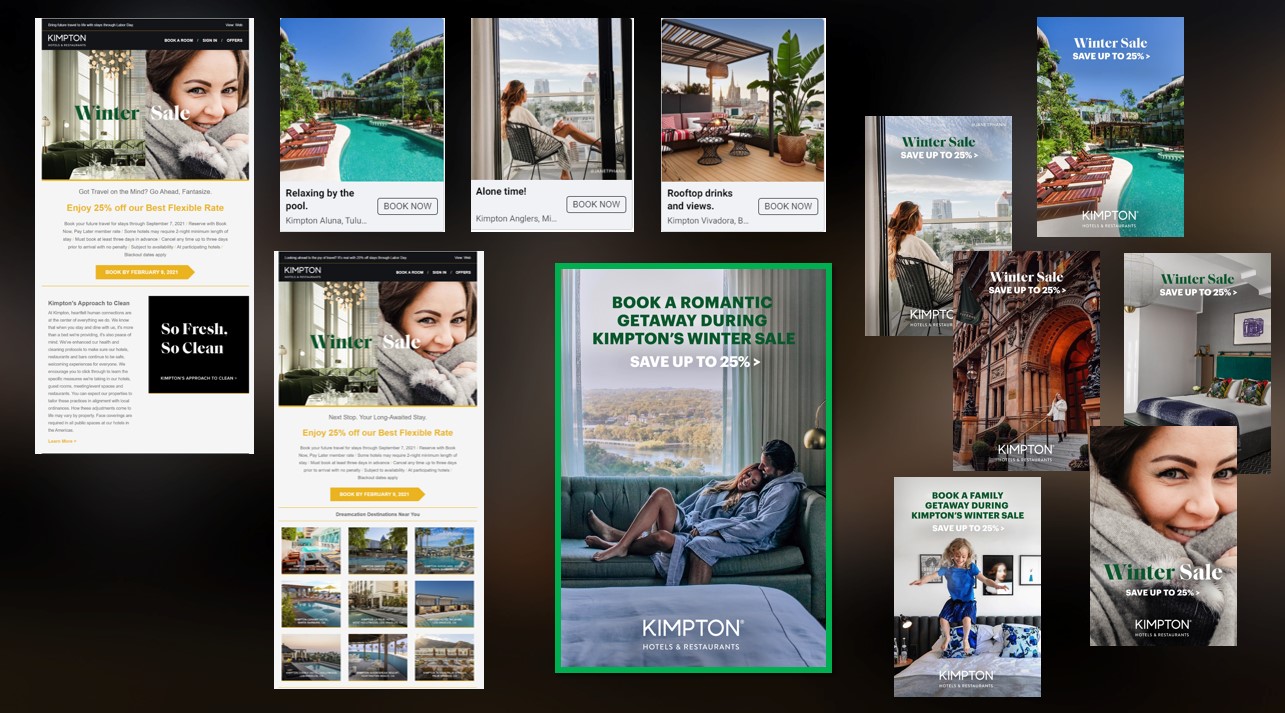Digital Done Differently: Lessons for the Future

By Mariana Safer, Director of Digital Marketing, Commercial Tiered Services, Kimpton Hotels & Restaurants
In February of 2020, COVID-19 headlines took a frightening turn. No one knew at that time that the astounding number of hotel cancellations pouring into reservations centers would halt the hospitality industry or much worse, take the lives of millions of people across the globe.
The pandemic brought about unusual and unprecedented circumstances for the lodging industry and hotel reservations: by March 21,, 2020, 100% of the United States’ 645 submarkets experienced REVPAR declines (“Data-Driven Solutions Empowering the Hospitality Industry”). By April 11, 2020, RevPAR dropped nearly 84%, with the Luxury & Upper/Upscale markets experiencing the worst declines of all segments (“Data-Driven Solutions Empowering the Hospitality Industry”).
For those in lodging who held positions of marketing, in particular, digital marketing to convert bookings, a palpable shift in strategy was necessitated. A new set of skill sets emerged, and new ways of mining and utilizing data needed to be activated. Here are some of the lessons learned from the energies, trials, and digital marketing experiences of the pandemic year that hotel digital marketers can use for the future, which will prove valuable on the road to recovery and beyond.
1. The data tells a story. Stop and listen frequently.
In the world of hotel digital marketing, there are mountains of data available to help guide budget decision-making and analyzing website and campaign performance. Website analytics, conversion metrics, traveler sentiment, city/regional/national/global performance data, property performance data, predictive demand, comp-set data, etc.
During the pandemic, data needed to be reviewed more frequently than ever before and in different ways. Various consultancies and industry travel retailers began surveying travelers and publishing their results which provided invaluable and relevant information for quick action. Google launched consumer surveys and a “Travel Analytics Center” with Destination Trends & Lookahead Analysis tools. Sojern, a programmatic advertising solution that utilizes traveler intent data to engage and convert travelers across digital channels, launched a COVID-19 Travel Data Insights board which displayed travel behavior and planning across all markets (by showing hotel and flight search and booking volume).
This data helped answer questions such as: When is the right time to put the gas on the pedal and increase spend for digital marketing campaigns? When should a hotel scale back? Where are the feeder markets where travelers are from? What type of traveler is hitting the road? Is it families with young kids? Couples looking for that romantic getaway? Digital nomads who want to work from anywhere but home? How far are they willing to travel? Are flight demand and international travel coming back at all?
In April 2020, 88% of Google’s Monthly COVID-19 & Travel Intent Survey respondents said they would not consider travel domestically, and 98% would not travel internationally. At that time, clearly, it was not prudent to spend marketing dollars to try to acquire new guests. The right call at that time was to pause, listen, and wait.

As the industry watched these numbers flip in a more positive direction, with more people willing to travel, hotel and destination marketing campaigns slowly started to re-launch. Listening to consumer sentiment from these surveys was and still is critical. Recommendations to increase digital marketing budgets had to be substantiated with data. What worked for one market or hotel may not have worked for another, and what worked in the past did not work at this time. The data needed to be reviewed and interpreted daily – as it still does today.
2. Send the right message, at the right time, to the right audience. (Now more than ever.)
Hotel marketers tirelessly brainstormed creative ways to shift and lure business to their hotels. Surveys like Google’s Monthly COVID-19 & Travel Intent Survey studied customer sentiment and provided insight into the appropriate marketing messages which would resonate with consumers:

During the darkest days of the pandemic, it was crucial not to appear opportunistic. Yet, how could a travel brand uplift travelers’ spirits? How could the hotel companies market without offense and not sound tone-deaf? How can the travel and lodging sector excite the public to travel again, and overcome any fear of safety or sanitation?
The year of the pandemic brought about a new urgency: identifying the customer who was willing to travel. Rather than simply increasing occupancy levels by a few percentage points or shifting consumer bookings to the direct website channel, reaching this willing consumer became a matter of survival for the lodging sector. If hotels couldn’t get people back in the door, how could they continue to operate sustainably?
Travel brands tested variations of ad copy in marketing campaigns. Kimpton, for example, messaged flexible booking policies and safety and cleaning policies across multiple channels such as SEM (search engine marketing, “paid search”), email, paid social media, and on the website with its “So Fresh, So Clean” approach. IHG reassured guests with its IHG® Clean Promise. Marriott launched an entire website around its new “Commitment to Clean” with videos focused on communicating new cleaning protocols to the consumer in an engaging format. Major hotel brands spent enormous time and resources to develop and establish these policies, communicate, and then implement them at the properties.
Marketing dollars shifted to far more localized, drive-in markets, more so than in the last decade of digital outreach. And with the second wave of COVID-19 in the winter of 2020, many travel brands pulled back marketing spend and instead focused on other methods of preparation for the future (when travel demand would come back) such as technology upgrades, website audits, optimizing, and creating new landing pages for SEO purposes based on the latest trending keyword searches, etc.
As mask mandates lift, as more states and countries reverse restrictions, and as we continue to see travel rebound, the message will continue to evolve, and consumer sentiment must always remain at the forefront.
3. Pivot digital quickly. Then test and modify, test and modify.
Pulling consumers into the “marketing funnel” simply means generating awareness of a brand, so that when the time comes to make a purchase, they will include this brand in their decision-making process. These initiatives help secure a hotel’s long-term financial success. While a marketing initiative that is high in the funnel is not expected to generate immediate bookings, mid- to low-funnel initiatives include ads that reach people who are ready to book. It is imperative for marketers to understand what initiatives should be considered at the various levels of the funnel.

When hotels re-started digital marketing campaigns last summer, budgets were spent on “low-funnel” initiatives that reached the consumer who was ready to book within 0-7 days of their hotel stay. Mid- to upper-funnel initiatives did not make their way back to most marketing plans until mid- to late-summer 2020. This meant that tight budgets were primarily spent on metasearch marketing (showing the hotel’s rates and availability in the metasearch engines such as Google, TripAdvisor, Kayak, and Trivago, which allow consumers to compare OTA rates in one place) and Brand/Hotel Name focused SEM (PPC – pay per click) campaigns.
As we moved ahead in 2020 and saw hotel searches increase across a few markets, (some) hotels incorporated more upper-funnel initiatives into the marketing mix, such as display campaigns and Paid Social Ads. At times, campaigns needed to be paused after witnessing low engagement, terrible returns, or a negative comment on social media.
What would resonate with the customer? Did they want to see pool images or a city view? The Kimpton Hotels & Restaurants brand marketing team executed a variety of initiatives to connect with its customers while carefully watching click-through rates and engagement metrics.

Almost every digital marketing initiative has a “ramp-up” period, where data needs to be collected before determining whether the campaign was successful (or not). It’s critical to A/B test and be ready to pivot quickly on a marketing message or initiative that may have immediate poor results, such as low click-through rates or negative feedback on social media.
4. Redefine business models as environmental conditions change.
In the rare situation when travel demand comes to a standstill, and revenue forecasts become obsolete, the needs of hotel owners change drastically. When there is suddenly no media budget to spend because hotels were forced to close or furlough associates, was it really wise to focus on SEM (PPC/pay-per-click) or metasearch marketing budgets?
At Kimpton, as the digital team started to see the results of its efforts decline in February 2020, it sparked new conversations and a redefinition of its purpose at the corporate office. A future-focused role of providing digital marketing services, along with other disciplines such as public relations and revenue distribution, were created and pitched to each property – customized to each hotel’s needs.
This new model paved the way for the team to rejuvenate and grow again as travel demand started to resume. While the field digital marketing team still provides a high-touch level of services, the new model also allows for flexibility based on each hotel’s forecast and the markets in which they operate – for now and well into the future.
Conclusion
When the (digital marketing) team collaborates, and employees feel connected and valued, especially during incredibly challenging times, they bring forth their best work. Companies thrive.
According to work psychologist Adam Grant, it should not take a pandemic to remind people that “engagement” at work doesn’t shield us from burnout or mental health challenges. Well-being goes beyond the work office. Grant also believes that leaders should strive to establish a healthy, productive environment through belonging and inclusion.
As employees come back to the workforce, this needs to stay top of mind to realize higher productivity levels, job satisfaction, and revenues. Employees who are treated kindly and compassionately, who find purpose in their day to day, and feel they are in a safe space, will stay with their company longer and go the extra mile for customers and the company’s stakeholders. Digital or otherwise.
References